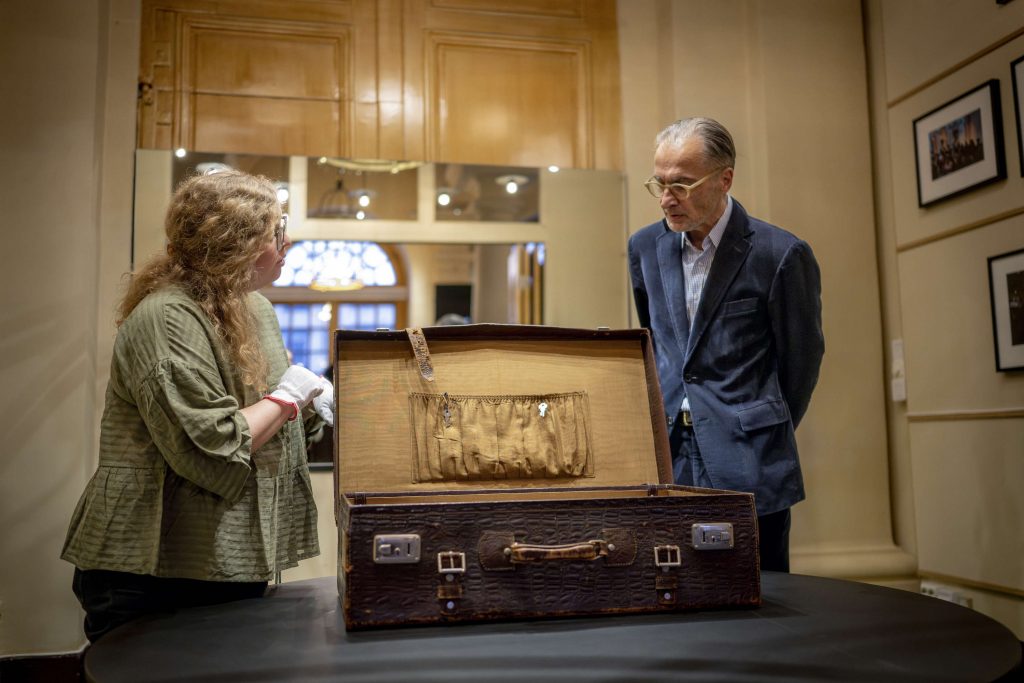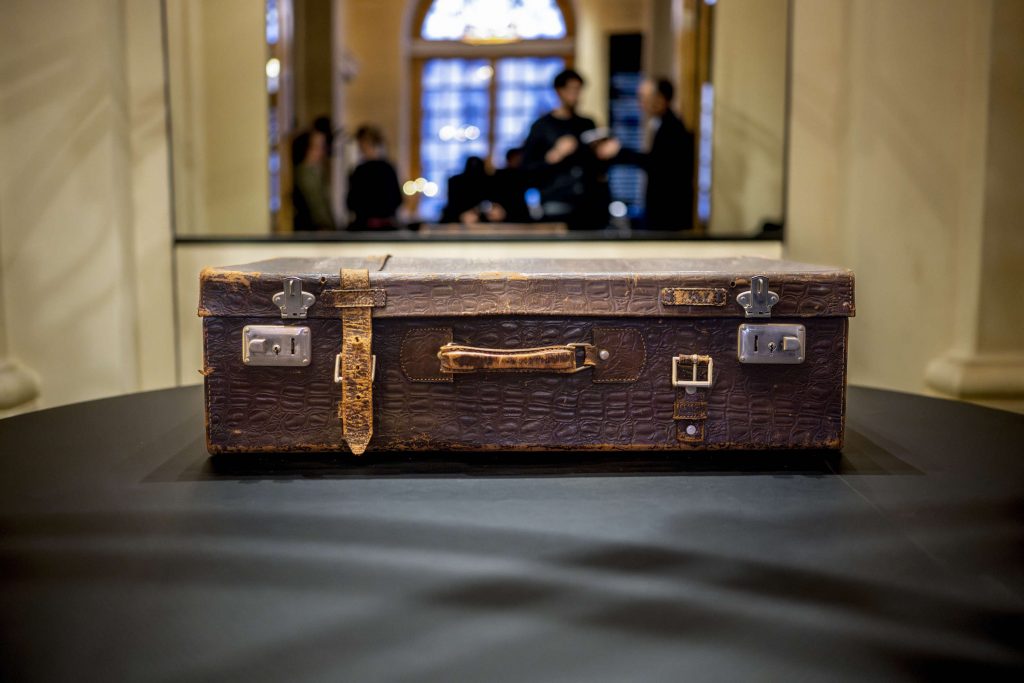Nelly Sachs was a German Jew, which meant that her life was in danger after the Nazi seizure of power in January 1933. After being terrorised by SA stormtroopers and subjected to looting and restrictions on her life, she managed to escape with her mother on one of the last civilian flights from Berlin in May 1940. All that they took with them was what they were wearing and the contents of the suitcase that has now been donated to the museum.

Elin Granberg (Nobel Prize Museum) and Aris Fioretos. © Nobel Prize Outreach. Photo: Nanaka Adachi.
Aris Fioretos received the suitcase 15 years ago from translator Margaretha Holmqvist, who was a close friend of Nelly Sachs. In 2010–2011, Fioretos served as the editor of the four-volume collected works of Nelly Sachs (Werke), published by Suhrkamp in an annotated edition in Germany. In connection with the publication, there was a large exhibition about Sachs’ life and works, in which the suitcase was displayed.
“One afternoon Margaretha invited me down to her basement,” says Fioretos. “In her storage space was the suitcase, slightly dusty and with a broken strap. It was cleaned up and, of course, was of exemplary importance in the exhibition. Now the suitcase will find a home at the Nobel Prize Museum, which can retell Sachs’ story. This is a fine way to take responsibility and preserve memories.”

© Nobel Prize Outreach. Photo: Nanaka Adachi.
From a young age, Nelly Sachs was fascinated by Swedish novelist and 1909 literature laureate Selma Lagerlöf, and the two were in contact by letter. Selma Lagerlöf helped Nelly Sachs to escape from Berlin. Several members of Nelly Sachs’ immediate family became victims of the Holocaust. Nazi persecution left deep marks on Sachs’ psyche and also influenced her writing.
Nelly Sachs was awarded the Nobel Prize in Literature in 1966 “for her outstanding lyrical and dramatic writing, which interprets Israel’s destiny with touching strength”. She was born on 10 December 1891 in Berlin and died on 12 May 1970 in Stockholm.
For further information please contact:
press@nobelprize.org
Press images can be found here.
Nobel Prize Museum
The Nobel Prize shows that ideas can change the world. The courage, creativity and perseverance of the Nobel Laureates inspire us and give us hope for the future. Films, in-depth tours, and artefacts tell the stories of the Laureates and their contributions ‘for the greatest benefit to humankind’. Based on the Nobel Prize’s unique combination of fields – natural sciences, literature and peace – we examine the greatest challenges of our time and show how we can respond to them through science, humanism and collaboration. With our exhibitions, school programmes, lectures and conversations, we at the Nobel Prize Museum strive to engage the public in making a better world. Today we are located at Stortorget in Gamla Stan, Stockholm’s Old Town district. We are planning to create a new home for our public outreach activities at Slussen in downtown Stockholm.
Disclaimer: Nobel Prize Museum is not directly or indirectly involved in the process of nominating or selecting Nobel Prize laureates. These procedures are strictly confidential and regulated by the Nobel Prize awarding institutions.
© Nobel Prize Museum 2023. Nobelpriset®, Nobel Prize® and the Nobel Prize medal are registered trademarks of the Nobel Foundation.